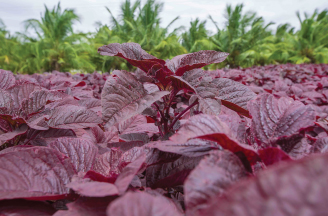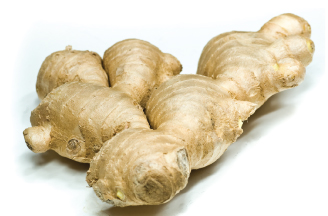The Power of Red Spinach: Health Benefits and Nutritional Value
Meet red spinach, nature’s nutritional gem! Bursting with vibrant colors, this leafy marvel holds a plethora of health benefits and vital nutrients. From boosting your immune system to enhancing overall well-being, let’s dive into the extraordinary potential of this superfood that promises to elevate your health to new heights. What is Red Spinach? Red spinach, also known as Amaranthus dubius, is a leafy green vegetable with stunning reddish-purple leaves. Unlike traditional green spinach, it boasts a more vibrant color and distinctive taste. Rich in essential nutrients like vitamins A, C, and K, iron, and antioxidants, red spinach offers a powerhouse of health benefits, promoting immunity, heart health, and overall well-being. Its unique flavor and incredible nutritional profile make it an excellent addition to any balanced diet. Health Benefits of Red Spinach Indulge in the exceptional health benefits of red spinach! Bursting with nutrients and powerful antioxidants, this superfood is a boon for your overall well-being. Let’s explore each of these benefits in detail: 1. Rich in Nutrients: Red spinach is a nutritional powerhouse, packed with vitamins, minerals, and dietary fibers that nourish the body and contribute to overall health. 2. Antioxidant Properties: The vibrant red color indicates the presence of anthocyanins, powerful antioxidants that neutralize harmful free radicals, protecting the body from oxidative stress and reducing the risk of chronic diseases. 3. Heart Health: Red spinach’s high potassium content helps regulate blood pressure, while its nitrate content promotes healthy blood flow, supporting cardiovascular health. 4. Eye Health: The presence of lutein and zeaxanthin in red spinach promotes eye health by protecting against age-related macular degeneration and cataracts. 5. Digestive Health: Rich in dietary fibers, red spinach aids in digestion, prevents constipation, and promotes a healthy gut environment. 6. Bone Health: Abundant in calcium and magnesium, red spinach contributes to strong bones and may help prevent osteoporosis. 7. Immune System Support: Red spinach’s vitamins A and C, as well as other antioxidants, bolster the immune system, helping the body fend off infections and illnesses. 8. Anti-Inflammatory Effects: The antioxidants and phytochemicals in red spinach possess anti-inflammatory properties, which may help reduce inflammation in the body. 9. Weight Management: Low in calories and high in fiber, red spinach can aid in weight management by promoting satiety and supporting a balanced diet. 10. Detoxification: Red spinach’s nutrients aid in the body’s natural detoxification processes, supporting liver function and eliminating toxins, which contributes to overall well-being. Difference between Green and Red Spinach Green spinach and red spinach differ primarily in their appearance, taste, and nutritional content. Appearance: The most apparent distinction is their color. Green spinach has a vibrant green hue, while red spinach displays a rich red or maroon color, making it visually striking and attractive. Taste: Green spinach tends to have a milder and slightly sweeter taste, whereas red spinach often possesses a more earthy and robust flavor. Nutritional Content: Red spinach typically contains higher levels of certain nutrients, such as beta-carotene and anthocyanins responsible for its red color. These antioxidants offer unique health benefits not found in green spinach. However, green spinach may excel in other nutrients like iron and calcium. Culinary Uses: Both types of spinach can be used interchangeably in various dishes, but red spinach’s vibrant color can add a striking visual element to salads, smoothies, and other culinary creations. Conclusion Red spinach undeniably emerges as a nutritional gem, offering a vivid spectrum of health-boosting properties. Its alluring crimson hue is a mere reflection of the abundant antioxidants and nutrients it possesses, empowering our bodies to thrive. By incorporating this vibrant superfood into our diets, we unlock a world of possibilities for a healthier, more vibrant life. Embrace the power of red spinach and savor the journey to enhanced well-being!




